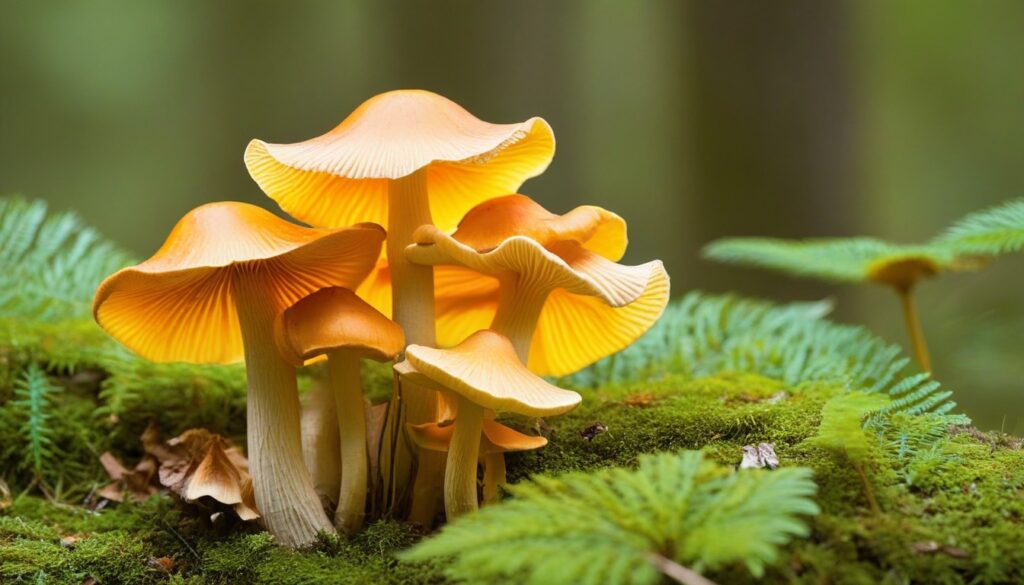Chanterelle mushrooms are a delicious delicacy that can add a burst of flavor to any dish. However, before using them in your cooking, it’s crucial to clean them properly to ensure they are safe to consume and free of any dirt or debris. In this article, we will provide you with a comprehensive guide on how to clean chanterelle mushrooms. Discover the best practices and step-by-step instructions to ensure your mushrooms are ready to be cooked and enjoyed.
Key Takeaways:
- Cleaning chanterelle mushrooms is essential to ensure they are safe to consume and free of any dirt or debris.
- Our comprehensive guide will provide you with the best practices and step-by-step instructions to clean chanterelle mushrooms efficiently and effectively.
- After cleaning your chanterelle mushrooms, explore various cooking ideas and recipes to showcase their unique flavor and texture.
- When cleaning chanterelle mushrooms, always prioritize safety and follow the necessary precautions to avoid potential risks.
Why Cleaning Chanterelle Mushrooms is Important
Before you start cleaning your chanterelle mushrooms, it’s essential to understand the importance of cleaning chanterelle mushrooms. While these delicious fungi are a favorite among foodies, they can also harbor dirt, debris, and insects that you don’t want to consume.
“Cleaning them properly is key to both their flavor and your health.”
Chanterelle mushrooms are typically wild-harvested, meaning they grow naturally in forests and other outdoor environments. As a result, they can come in contact with dirt, leaves, and other debris that can cling to their delicate, ridged caps.
Additionally, chanterelles can play host to insects such as worms, slugs, or beetles that may be hiding inside. These unappetizing creatures can be difficult to spot with the naked eye, making it essential to clean your mushrooms properly.
Cleaning chanterelle mushrooms ensures you’re consuming only the delicious, healthy aspects of this gourmet ingredient. Plus, taking the time to clean and prepare these mushrooms properly is the best way to fully appreciate their unique flavor.
Gathering the Necessary Supplies
Before cleaning your chanterelle mushrooms, it’s essential to gather all the necessary supplies. Having the right tools and equipment will help you clean your mushrooms effectively and efficiently. Here is a list of supplies you’ll need:
|
Supplies |
Description |
|---|---|
|
Clean, damp cloth or paper towels |
For wiping off any excess dirt or debris |
|
Bowl |
For holding the mushrooms during cleaning |
|
Clean water |
For rinsing the mushrooms |
|
Strainer or colander |
For draining the water from the mushrooms after rinsing |
|
Chef’s knife |
For trimming any unwanted parts of the mushrooms |
Make sure all the supplies are clean and sanitized before use. This will help prevent any contamination of the mushrooms during the cleaning process. Once you have everything you need, you’re ready to move on to the next step!
Inspecting the Chanterelle Mushrooms
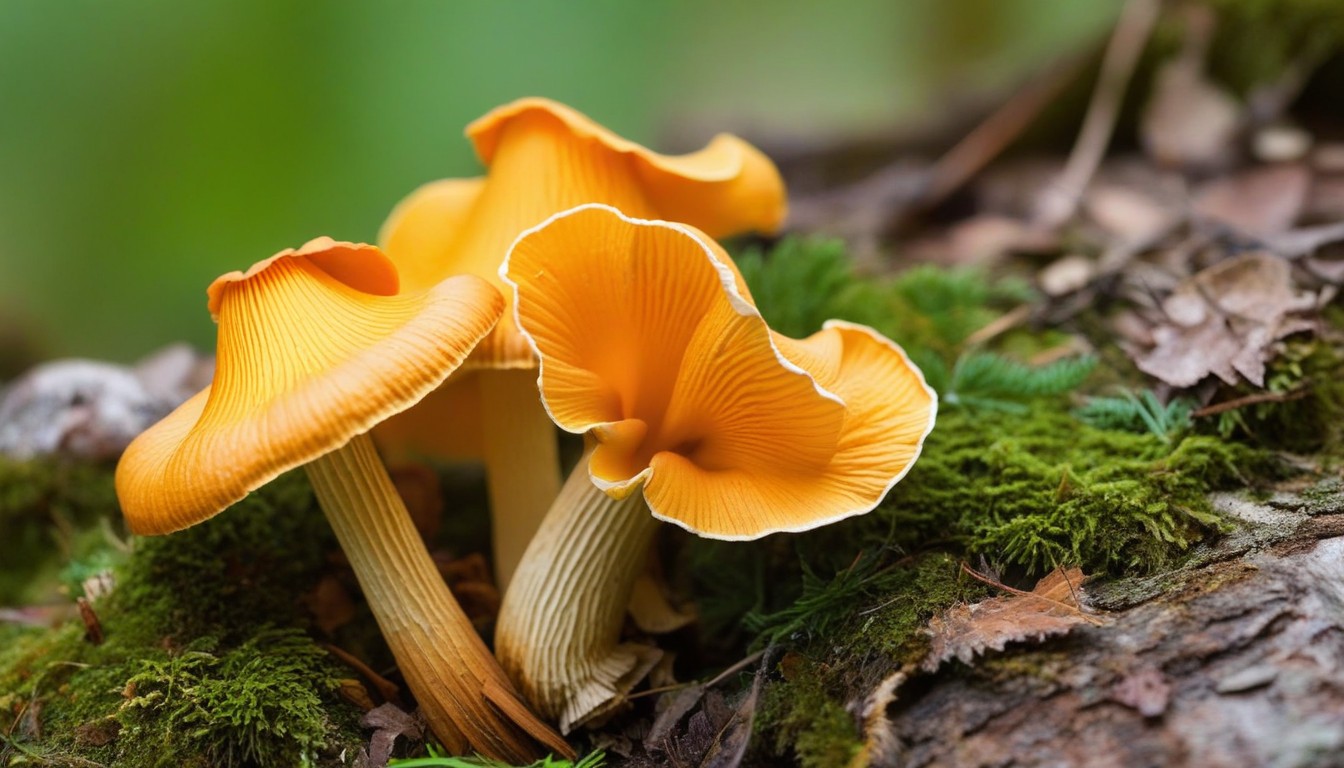
Before you start cleaning your chanterelle mushrooms, it’s essential to inspect them thoroughly. Fresh chanterelle mushrooms should have a clean, earthy fragrance, and their caps should be firm and dry. Avoid mushrooms that are slimy, discolored, or have pungent odors, as these may indicate spoilage or contamination.
Inspect the underside of the mushroom’s cap and the stem for any signs of insect or worm activity. Chanterelle mushrooms are known to attract insects, and you may find small holes or tunnels in the caps or stems. If you notice any signs of insects or worms, cut away the affected areas before cleaning the mushrooms.
Tip: If you’re unsure whether a mushroom is safe to eat, consult an expert or avoid consuming it.
“Fresh chanterelle mushrooms should have a clean, earthy fragrance, and their caps should be firm and dry.”
Choosing the Right Chanterelle Mushrooms
To ensure you’re working with the freshest and safest chanterelle mushrooms, buy them from a reputable source, such as a farmer’s market or specialty grocery store. Choose mushrooms that are plump, with bright orange or yellow caps, and white, firm stems.
Handling the Chanterelle Mushrooms
When inspecting the chanterelle mushrooms, handle them gently to avoid bruising or damaging the delicate caps and stems. Use a soft brush or a damp cloth to remove any visible dirt or debris, being careful not to break the mushrooms or remove too much of the surface area.
Note: If you plan to store the mushrooms for later use, handle them as little as possible to avoid damaging their texture or quality.
Removing Excess Dirt and Debris
Chanterelle mushrooms are delightful, but they can collect dirt and debris, which needs to be removed before cooking. Cleaning chanterelle mushrooms is a delicate process and requires a gentle touch to avoid damaging the mushroom’s cap and gills. To remove any dirt and debris from your chanterelle mushrooms, follow these simple steps:
- Brush the Tops: Use a soft-bristled brush to gently clean the tops of the mushrooms. A pastry brush or a mushroom brush works well for this task. Brush in a circular motion to remove any dirt or debris, being careful not to bruise the mushroom’s cap or stems.
- Trim the Ends: Cut off any damaged or dirty parts of the mushroom stems using a sharp knife. Be mindful not to cut off too much, as the stems are just as flavorful as the caps.
- Soak in Cold Water: Fill a large bowl with cold water. Submerge the chanterelle mushrooms in the water and gently swish them around. This action loosens any dirt or debris that may be hiding in the gills. Let them soak for a few minutes to allow the dirt to settle at the bottom of the bowl.
- Remove and Dry: Lift the mushrooms out of the bowl and transfer them to a colander. Rinse the mushrooms again under running water. Gently shake the colander to remove any excess water, then place the mushrooms onto a paper towel to dry.
Once your chanterelle mushrooms are clean and dry, they’re ready for the next step in the cooking process. Removing excess dirt and debris allows you to showcase the true flavor and texture of these delightful fungi.
Rinsing the Chanterelle Mushrooms
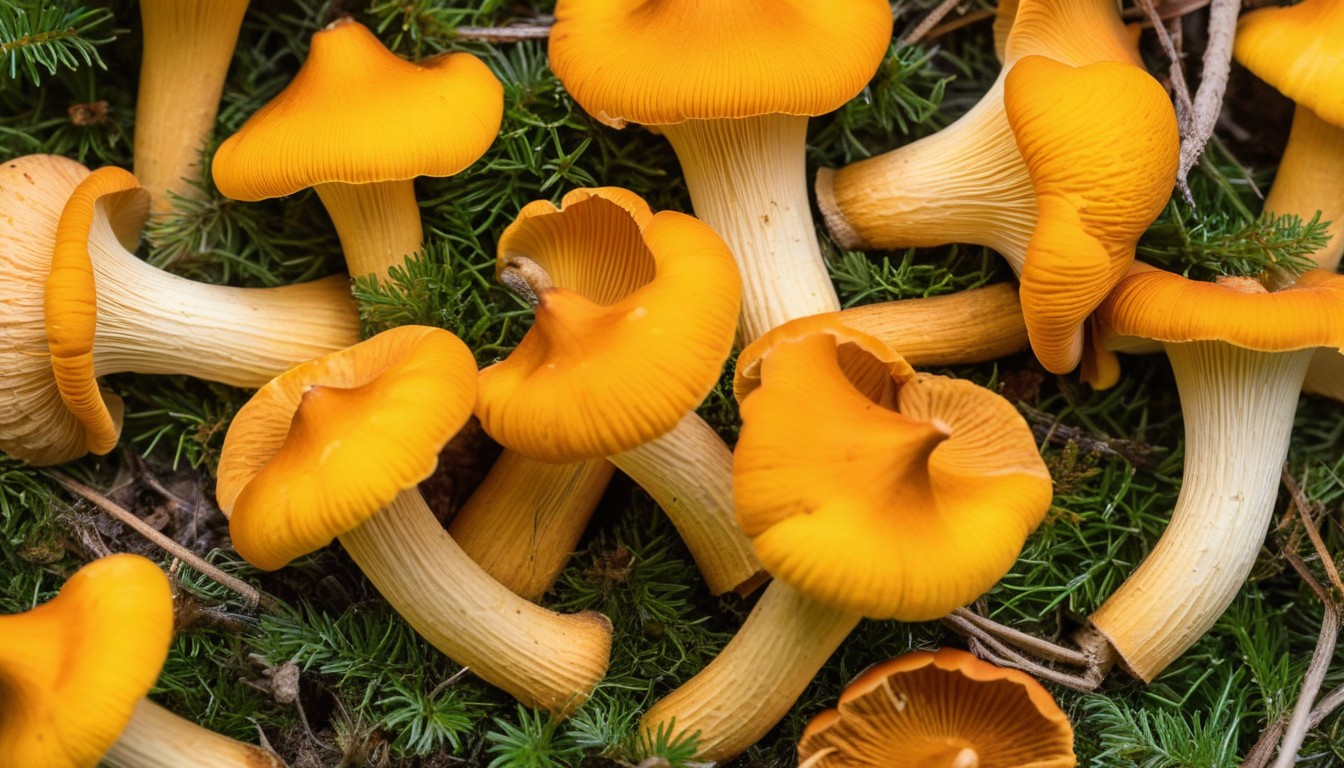
After you have removed any excess dirt and debris, it’s time to rinse your chanterelle mushrooms thoroughly. Rinsing the mushrooms will remove any remaining dirt and debris and ensure they are clean and ready for cooking.
Fill a large bowl with cold water and gently place the mushrooms in it. Swirl the mushrooms around in the water, taking care not to damage their delicate texture. You may need to do this a few times to ensure the mushrooms are completely clean.
Note: You don’t need to worry about soaking the mushrooms for an extended period of time, as this can lead to them absorbing too much water and becoming soggy.
Once the mushrooms are clean, carefully remove them from the water and place them on a clean paper towel. Pat them dry gently with another clean paper towel. Remember that chanterelle mushrooms are delicate, so be sure to handle them with care.
Tip: It’s important to rinse your mushrooms just before cooking them to avoid any potential bacterial growth that may occur if they are stored wet.
Drying the Chanterelle Mushrooms
After rinsing the chanterelle mushrooms, it’s crucial to dry them thoroughly to prevent any moisture-related issues.
There are different methods to dry your cleaned chanterelle mushrooms. One option is to lay them out on a clean kitchen towel and pat them dry gently. Try to remove as much moisture as possible, paying extra attention to the crevices and gills of the mushrooms.
Another option is to use a salad spinner to remove excess water. Place the mushrooms in the spinner and give them a few gentle spins to remove any remaining water.
Regardless of the method you choose, make sure the mushrooms are completely dry before storing them.
Tip:
Avoid using a hairdryer or other heat source to dry your chanterelle mushrooms, as this can result in over-drying and damage their delicate texture.
Handling and Storing Cleaned Chanterelle Mushrooms
After you have successfully cleaned your chanterelle mushrooms, it’s crucial to handle and store them properly to maintain their quality and flavor.
Handling Chanterelle Mushrooms
When handling cleaned chanterelle mushrooms, it’s best to use a gentle touch. These delicate mushrooms can bruise easily, which can affect their texture and appearance. Here are a few helpful tips for handling your cleaned chanterelle mushrooms:
- Use a soft-bristled brush or a gentle cloth to remove any excess debris or dirt.
- Avoid washing the mushrooms again, as this can add moisture that can lead to spoilage.
- Transfer the mushrooms to a clean, dry container, making sure not to overcrowd them.
- Keep the mushrooms in a cool, dry place until you’re ready to use them.
Storing Chanterelle Mushrooms
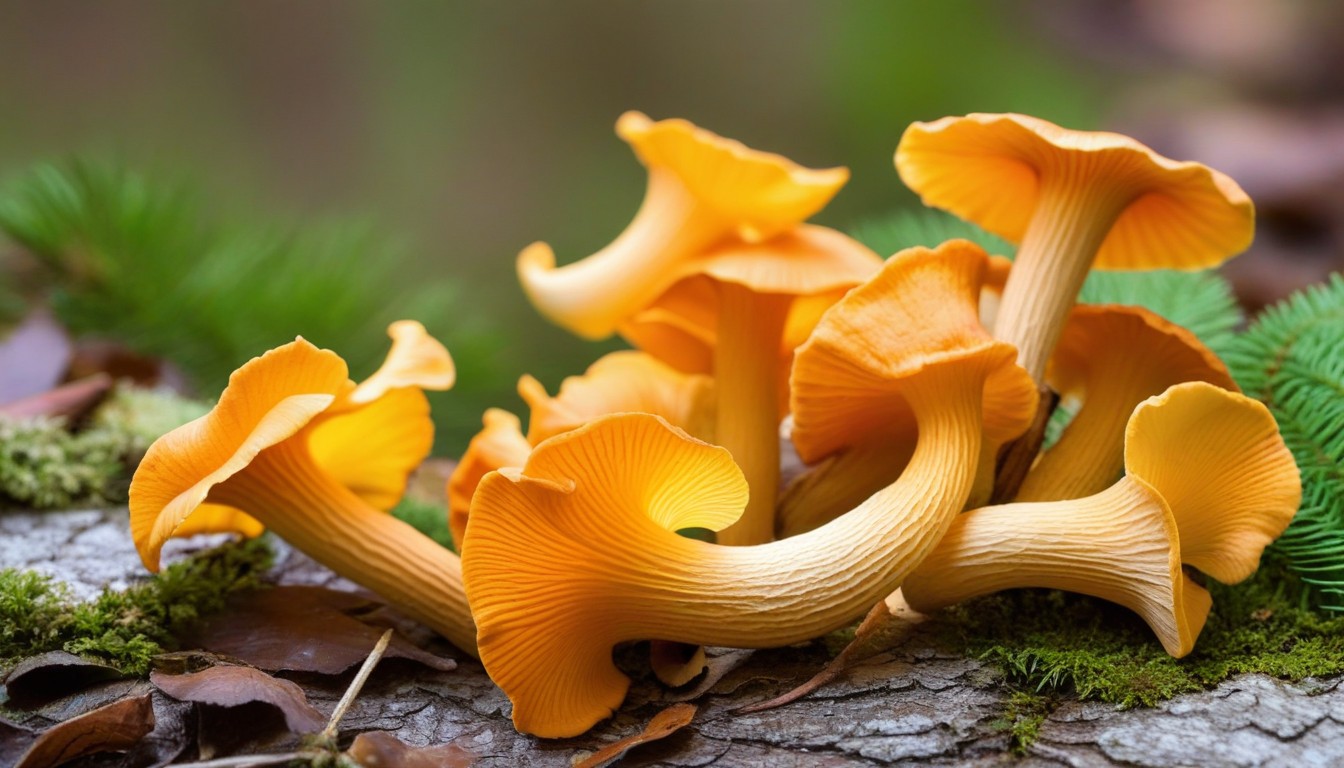
Chanterelle mushrooms are highly perishable and should be consumed as soon as possible after cleaning. However, if you need to store them, here are a few ways to do so:
|
Storage Method |
Details |
|---|---|
|
Refrigerator |
|
|
Freezing |
|
Using Stored Chanterelle Mushrooms
Before using your stored chanterelle mushrooms, it’s important to inspect them for any signs of spoilage, such as discoloration, sliminess, or an unpleasant odor. If the mushrooms appear to be in good condition, use them in your favorite culinary creations, such as soups, stews, risottos, or sautés.
By properly handling and storing your cleaned chanterelle mushrooms, you can enjoy their unique flavor and texture for as long as possible.
Tips and Tricks for Cleaning Chanterelle Mushrooms
If you’re looking to clean chanterelle mushrooms like a pro, there are a few tips and tricks you should keep in mind. These insights will help you streamline the cleaning process while ensuring your mushrooms are free of dirt, debris, and other impurities.
Tip #1: Use a Soft-Bristled Brush
One of the best ways to remove dirt and debris from chanterelle mushrooms is by using a soft-bristled brush. A brush helps you gently scrub away any impurities without damaging the delicate mushroom flesh. Look for a brush with soft bristles that won’t scratch the surface of the mushrooms.
Tip #2: Slice the Mushrooms in Half
If your chanterelle mushrooms are particularly dirty, you may want to slice them in half before cleaning them. This will give you greater access to the gills and other hard-to-reach areas. However, be careful not to slice the mushrooms too thin, as this can impact their texture and flavor.
Tip #3: Avoid Soaking the Mushrooms
While it may be tempting to soak your chanterelle mushrooms to get them clean, this can actually do more harm than good. Soaking mushrooms can cause them to become waterlogged and lose their delicate flavor and texture. Instead, rinse them quickly under cold running water and brush away any dirt or debris.
Tip #4: Store Chanterelle Mushrooms Properly
Once your chanterelle mushrooms are cleaned, it’s important to store them properly to maintain their freshness. Wrap them in a damp paper towel and store them in a paper bag in the refrigerator. Avoid storing them in plastic, as this can trap moisture and cause the mushrooms to spoil more quickly.
Tip #5: Use a Mushroom Brush Kit
If you’re serious about cleaning chanterelle mushrooms, you may want to invest in a mushroom brush kit. These kits come with a selection of soft brushes and tools designed specifically for cleaning mushrooms. They are a great way to ensure your mushrooms are cleaned thoroughly without damaging them in the process.
Cooking Ideas for Cleaned Chanterelle Mushrooms
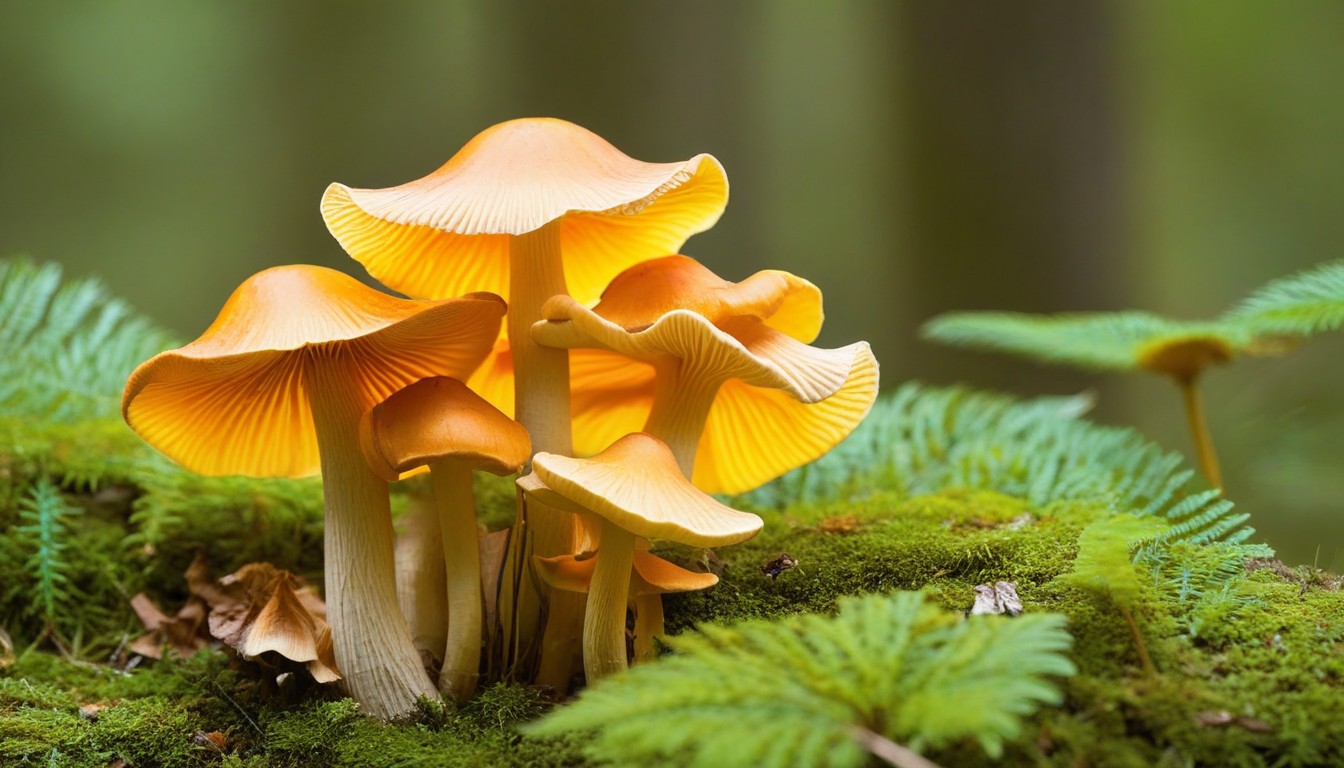
Now that your chanterelle mushrooms are clean and ready to use, it’s time to get creative in the kitchen. These mushrooms have a unique flavor and texture that pair well with a variety of dishes. Here are some cooking ideas to get you started:
- Sautéed Chanterelle Mushrooms: Heat a pan with some oil or butter, add the mushrooms, and cook until golden brown. These mushrooms are delicious as a side dish or added to pasta dishes.
- Chanterelle Mushroom Risotto: Cook the mushrooms with onions, garlic, and arborio rice. Add chicken or vegetable broth, white wine, and Parmesan cheese to create a creamy and flavorful dish.
- Chanterelle Mushroom Soup: Sauté the mushrooms with onions, carrots, and celery. Add chicken or vegetable broth, herbs, and cream to create a rich and hearty soup.
- Chanterelle Mushroom Pizza: Top a pizza crust with sautéed mushrooms, mozzarella cheese, and fresh herbs for a gourmet and flavorful pizza.
- Chanterelle Mushroom Omelet: Sauté the mushrooms and add them to a classic omelet with cheese and fresh herbs. Serve with toast for a delicious breakfast or brunch.
These are just a few ideas to get you started. Chanterelle mushrooms are versatile and can be used in many different dishes. Experiment with different flavors and ingredients to create your own unique recipes.
Safety Precautions When Cleaning Chanterelle Mushrooms
When cleaning chanterelle mushrooms, it’s crucial to prioritize safety to prevent any potential health risks. Here are some essential safety precautions to keep in mind:
- Wear gloves: Chanterelle mushrooms are often found in the wild, and they can contain harmful bacteria or toxins that can cause illness if not handled properly. To avoid skin contact with any potential toxins, it’s recommended to wear gloves when cleaning the mushrooms.
- Handle mushrooms gently: Chanterelle mushrooms are fragile and can easily break or bruise. To ensure the mushrooms retain their quality and flavor, handle them gently when cleaning or storing.
- Only consume mushrooms you know are safe: Not all mushrooms are safe to eat, and some can be poisonous or deadly. Make sure you are confident in your identification of chanterelle mushrooms before consuming them.
- Clean mushrooms thoroughly: Chanterelle mushrooms can contain dirt, debris, or insects that may be hiding in their delicate folds. To ensure they are safe to eat, it’s crucial to clean them thoroughly before cooking.
- Store mushrooms properly: After cleaning, it’s essential to store the mushrooms properly to prevent spoilage or bacterial growth. Keep them in a cool, dry place, and use them within a few days of cleaning.
By following these safety precautions, you can ensure a safe and enjoyable culinary experience with chanterelle mushrooms.
Conclusion
Cleaning chanterelle mushrooms is a critical step in preparing these gourmet treats. By following the steps outlined in this guide, you can ensure that your chanterelle mushrooms are safe, delicious, and ready to be used in various culinary creations.
Tips for Success
Remember to inspect your mushrooms carefully, remove any excess dirt or debris, rinse them gently, and dry them completely. When handling and storing your mushrooms, make sure to follow best practices to maintain their freshness and extend their shelf life.
Final Thoughts
With the right tools, techniques, and attention to safety, cleaning chanterelle mushrooms can be a rewarding and enjoyable experience. So why not give it a try and impress your family and friends with a delicious chanterelle mushroom dish today?
FAQ
Why is cleaning chanterelle mushrooms important?
Cleaning chanterelle mushrooms is important because it helps remove dirt, debris, and potential insects that may be hiding in the mushrooms. This ensures that your mushrooms are clean, safe to consume, and ready to be cooked.
What supplies do I need for cleaning chanterelle mushrooms?
To clean chanterelle mushrooms, you will need a soft brush or mushroom brush, a clean towel or paper towels, a colander or strainer, and a sharp knife for any necessary trimming.
How do I inspect chanterelle mushrooms?
To inspect chanterelle mushrooms, look for mushrooms that are firm, have a bright color, and show no signs of mold or sliminess. Additionally, check for any dirt, insects, or debris that may be present.
How do I remove excess dirt and debris from chanterelle mushrooms?
To remove excess dirt and debris from chanterelle mushrooms, gently brush them using a soft brush or mushroom brush. Be careful not to press too hard to avoid damaging the delicate mushrooms.
How should I rinse chanterelle mushrooms?
To rinse chanterelle mushrooms, place them in a colander or strainer and rinse them under cold running water. Gently shake the colander or use your hands to ensure all the mushrooms are rinsed thoroughly.
How do I dry chanterelle mushrooms?
After rinsing, pat the chanterelle mushrooms dry using a clean towel or paper towels. Alternatively, you can lay them out on a clean towel or paper towels to air dry for a short period of time.
How should I handle and store cleaned chanterelle mushrooms?
After cleaning, place the chanterelle mushrooms in a paper bag or a loosely sealed container lined with paper towels. Store them in the refrigerator and use them within a few days for optimal freshness.
What are some tips for cleaning chanterelle mushrooms?
Some tips for cleaning chanterelle mushrooms include using a soft brush or mushroom brush to gently remove dirt, debris, and insects, inspecting them carefully before cleaning, and avoiding soaking them in water to prevent them from becoming waterlogged.
What are some cooking ideas for cleaned chanterelle mushrooms?
Cleaned chanterelle mushrooms can be used in a variety of delicious recipes, such as sautés, soups, pasta dishes, or even as a pizza topping. Their unique flavor and texture make them a versatile ingredient in the kitchen.
What safety precautions should I follow when cleaning chanterelle mushrooms?
When cleaning chanterelle mushrooms, it’s important to prioritize safety. Always handle wild mushrooms with caution, wear gloves if desired, and avoid consuming any mushrooms that show signs of spoilage or unfamiliar characteristics. If in doubt, consult a mushroom expert.

